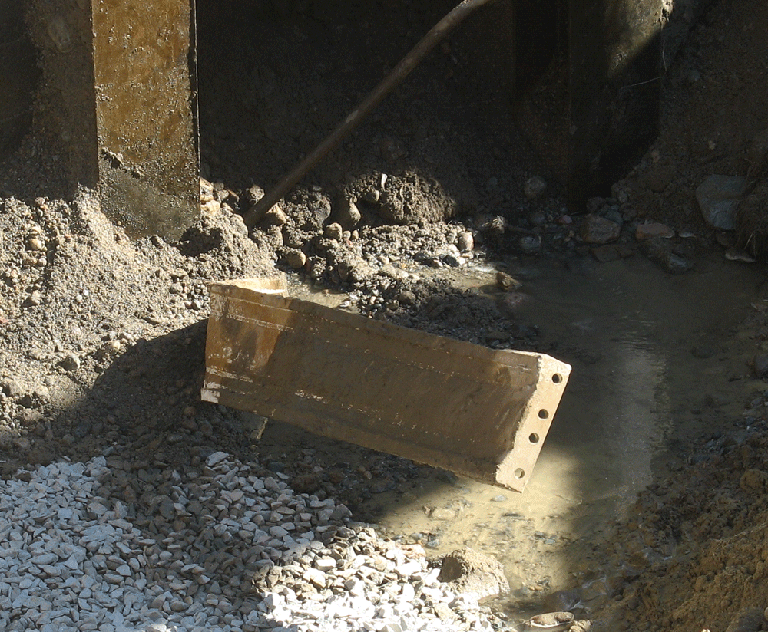Advertisement
MWRA Locates Coupling Blamed For Water Main Break
Water utility workers Thursday located a massive coupling blamed for the May 1 water main break that forced two million Boston-area residents to boil their drinking water.
The coupling was discovered as workers for the Massachusetts Water Resources Authority excavated near the location of the break in Weston. The agency had been searching for more than two months for the 1-ton coupling that held together two sections of the 10-foot pipe and was blown off during the break. It was believed buried in the area or in the Charles River.

The massive metal fastener is considered the key piece of evidence in the blowout, which left residents of 30 towns and cities, including Boston, without safe drinking water for three days.
Also Thursday, MWRA officials said they were issuing subpoenas against the company that manufactured the coupling. They said they want documents from representatives of the Pennsylvania-based Victaulic Company who were present during the installation of the coupling when the pipe was completed eight years ago.
"It's intended to try to preserve evidence and to make sure we get all the details about the installation of that coupling," said Steve Remsberg, an MWRA attorney, who said the agency was looking not only for written records, but also any photos or videos of the installation.
"We are simply trying to get the information that we think would be helpful to our own understanding of the break," he said.
The search for the coupling frustrated MWRA at times. The agency tried state police dive teams, metal detectors and ground-penetrating radar to try to locate the piece.
The discovery Thursday came hours after crews located a second 12-inch metal plate used to help fasten the coupling. Workers had previously found a bolt and a rubber gasket also used as part of the coupling assembly.
A Victaulic spokesman said there could be other factors for the blowout than the coupling.
"We have been very clear that one can't look at our product independent of the pipe system itself and the installation of the product," said company spokesman Eric Luftig.
MWRA executive director Fred Laskey, testifying before lawmakers at a State House hearing Thursday, said the coupling was not the first choice to hold together the two sections of pipe.
Laskey said the initial plans called for the pipe sections to be welded together but that the decision to switch to the coupling was made at the request of the contractor during construction in part because of time pressures.
That request was approved by engineering and design firms working on the project, according to Laskey, who said the use of a coupling wasn't unusual to join together sections of a pipe. He said that a first coupling didn't work, and a second coupling was eventually installed.
"At every step of the way, we have people telling us this was the right coupling," he said. "These are ubiquitous throughout the industry."
He said the MWRA has at least 170 couplings of the same brand in different sizes and under different pressures throughout its system.
Laskey said the discovery of the missing coupling will help the agency determine an exact cause of the breach.
Officials estimated the entire cost of fixing the pipe, repairing any damage to the area around the blowout and searching for the coupling at anywhere between $900,000 to $1.2 million.
This program aired on July 15, 2010. The audio for this program is not available.